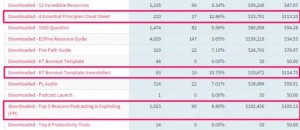Bounce backs are a big bummer when you are trying to win over customers with an email marketing campaign. Investigating Simple Mail Transfer Protocol (SMTP) response codes, which servers send you to explain returned mail, can help you clean up your email list and resolve issues. The first step is recognizing why your emails are failing to be sent in the first place. Are you committing one of the seven deadly sins of email marketing? If not, read below to discover a few more common reasons for bounce back and how to address them:
Bad Email Addresses
This message means one of the following has happened: you have misspelled the address, made a typo, the recipient no longer has that email address, or you received a fake address. Check your email list to see if any of these causes apply. If there are no obvious errors, then try getting in touch with the contact in another way, such as via phone, to see what’s going on.
Undeliverable
Undeliverables are more problematic. This means that there was some sort of problem with the server. It could be that it was too busy at the time you sent the email. In that case, resend later and it should go through. But it could also be that the server no longer exists, in which case you’ll continuously get the bounce back. You can try getting in touch with the contact for a new address if it is a persistent problem.
Spam Purgatory
In a way, servers are the modern hallway monitor. They let email into their client’s mailbox as long as they pass muster. If they don’t, it’s off to the spam folder. Of course, you should be smart about the language and content in your email, so it doesn’t set off any alarms. You can also suggest subscribers put your address in their address book, which tells the server that mail from you is safe and desirable.
Blocked Mail
On rare occasions, servers have increased security (think schools) and block mail from outsiders, especially commercial entities. You can contact customers in this situation and have them tell the webmaster to remove you from the blocked list.
A Full Mailbox
If the user hasn’t deleted email or no longer uses that mailbox, your email might be spurned because there’s no room for it. You can try contacting the customer in another way to get a new email address.
When you cannot contact customers in another way, you’re repeatedly getting bounce backs, and you can’t resolve the issue without their input, you have to remove them from your list. Check out these tips on how to do exactly that. After all, a successful email marketing campaign is reliant on your ability to bounce back from bounce backs!
What do you do to keep your email list healthy? Let us know by leaving your comments below.
(185)





